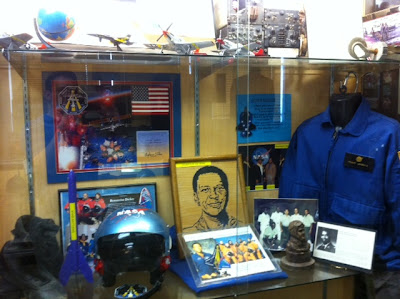
On Friday, June 17, I ran by the doctor's office to pick up a referral. Since the office is next to the MFAH, I typically walk over from work at lunchtime and take a pass through the museum. This time I drove (saving the time of walking) with the intention of hitting one of the other nearby museums. But, a quick peek inside the MFAH was still possible, and I was pleased to see a new acquisition by Frank Stella on display.
The Contemporary Arts Museum Houston (CAMH) seemed like the place to go. I used to frequent this museum (which does not have a permanent collection), since it is across the street from the MFAH, but it has been some time since I have been inside. Contemporary art (like contemporary music, dance, theater, etc.) can be hit or miss. The CAMH has hosted several wonderful exhibits, most notably Matthew Ritchie's Proposition Player and a retrospective of Jim Love after he passed away. But some of the diverse media used by artists are not to my liking, particularly films. So, the primary exhibit on display, Stan VanDerBeek: The Culture Intercom, was not my cup of tea.
A better exhibit was downstairs, Perspectives 174: Re: Generation. This exhibit showcased work from Houston area teens. Many of the museums in Houston promote the work of area youth, which is wonderful. The standout here was Casey Herrick's ceramic piece, Black and White Television. The museum routinely publishes small brochures for their perspectives series, and one was available for the nominal fee of $2.00. I like brochures for exhibits (which provide details on the art that I can read later as well as images from the exhibit; especially important when you are prohibited from photographing the art). The cost factor may prohibit museums from producing free brochures for exhibits, and offering a low-cost brochure is an excellent compromise.
I've always found the CAMH building (designed by Gunnar Birkerts) to be uninspired. The open floor plan upstairs and downstairs allows for great flexibility in producing exhibits (very important for a non-collecting museum), but does practicality have to be so bland?
 James Surl: Molecular Three and Three, 2011, outside of the CAMH
James Surl: Molecular Three and Three, 2011, outside of the CAMH






























